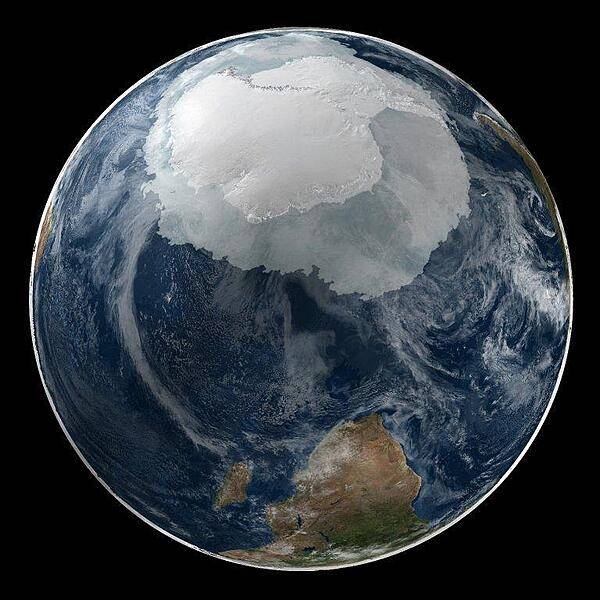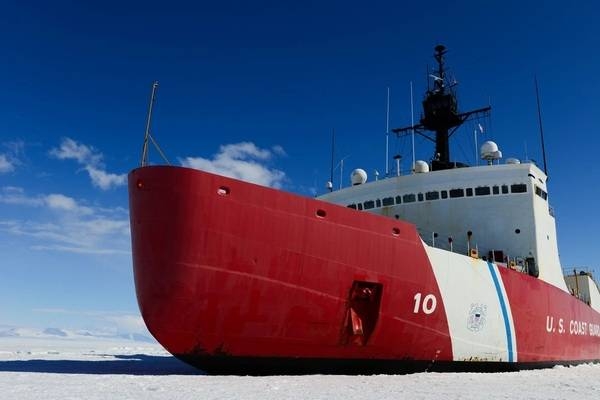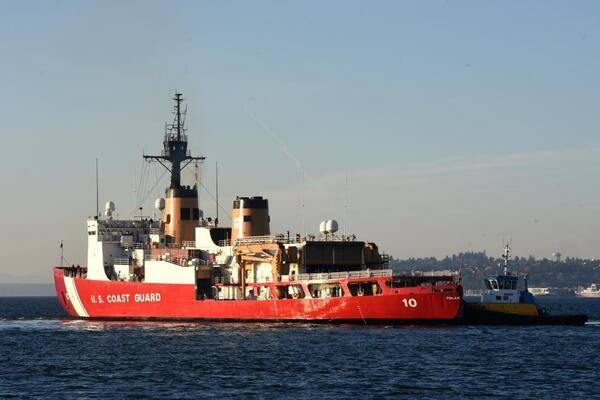Southern Ocean
Photos
10 Photos
Filter Categories
All
Filters
A global view of the Antarctic on 21 September 2005. This image presents the entire Antarctic region, most of the Southern Ocean, large portions of the southern Atlantic and Pacific Oceans, as well as the island of Madagascar and southern Africa. Image courtesy of NASA.

Orca or killer whales are the largest members of the dolphin family. They are a cosmopolitan species, found in all of the world's oceans. This dramatic photo shows an orca hunting a Weddell seal in the Southern Ocean. The seal has attempted to save itself by hiding on an ice floe, but orcas, one of the most intelligent of mammals, are adept at tipping or flipping floes. Photo courtesy of the National Science Foundation Office of Polar Programs / Robert Pitman.

Orca (killer whale) sexes may be distinguished by their dorsal fins: male fins are straight, female fins curve. Photo courtesy of NOAA.

An orca mother-calf pair in the Ross Sea. Photo courtesy of the National Science Foundation Office of Polar Programs / Robert Pitman.

The US Coast Guard Cutter Polar Star, with 75,000 horsepower and its 13,500-ton weight, is guided by its crew to break through Antarctic ice enroute to the southern continent. The ship remains the world's most powerful non-nuclear icebreaker. The USGCC Polar Star is the Coast Guard’s only operational heavy icebreaker capable of conducting Antarctic ice operations and is an integral part of the yearly resupply of the National Science Foundation’s McMurdo Station. Photo courtesy of US Coast Guard/ Chief Petty Officer David Mosley.

The crew of the US Coast Guard Cutter Polar Star operates near a couple of Antarctic seals. Seeing wildlife unique to Antarctica is one of the many highlights that the cutter's crew experiences during their yearly deployment to the southern continent. Photo courtesy of the US Coast Guard/Chief Petty Officer David Mosley.

US Coast Guard Cutter Polar Star, a heavy icebreaker homeported in Seattle, Washington, rests in the ice as the motor vessel Ocean Giant departs from the National Science Foundation's McMurdo Station on 1 February 2017. One of the primary responsibilities of the Polar Star's crew is to provide an escort for the Ocean Giant through the frozen Ross Sea off of Antarctica. Photo courtesy of the US Coast Guard/ Chief Petty Officer David Mosley.

The US Coast Guard Cutter Polar Star (WAGB 10) sits hove-to ice on the frozen Ross Sea, Antarctica, on 6 January 2022. Polar Star is the America’s sole operating heavy icebreaker and the most powerful nonnuclear icebreaker in the world. Photo courtesy of the US Coast Guard/ Petty Officer 3rd Class Diolanda Caballero.

The US Coast Guard Cutter Polar Star (WAGB 10) and crew departs Seattle on 16 November 2022. The crew left Seattle to begin Operation Deep Freeze, a 32,000 km (20,000-mile) round-trip supporting the annual joint military mission to resupply the United States Antarctic stations in support of the National Science Foundation, the lead agency for the United States Antarctic Program. Photo courtesy of the US Coast Guard/ Petty Officer 3rd Class Michael Clark.

Hourglass dolphins live in the southern circumpolar waters from close to the Antarctic ice pack to about 45 degrees south. They are distinctively colored but not yet well studied. Hourglass dolphins frequently bow-ride waves from ships (i.e., within the waves induced by the bow of the moving vessel). Photo courtesy of NOAA / Elizabeth Crapo.
